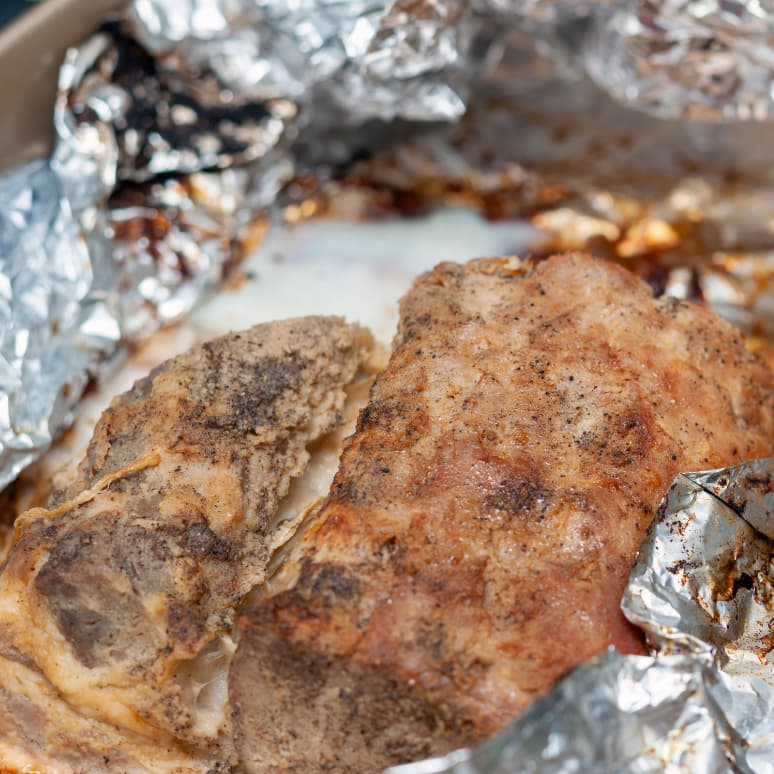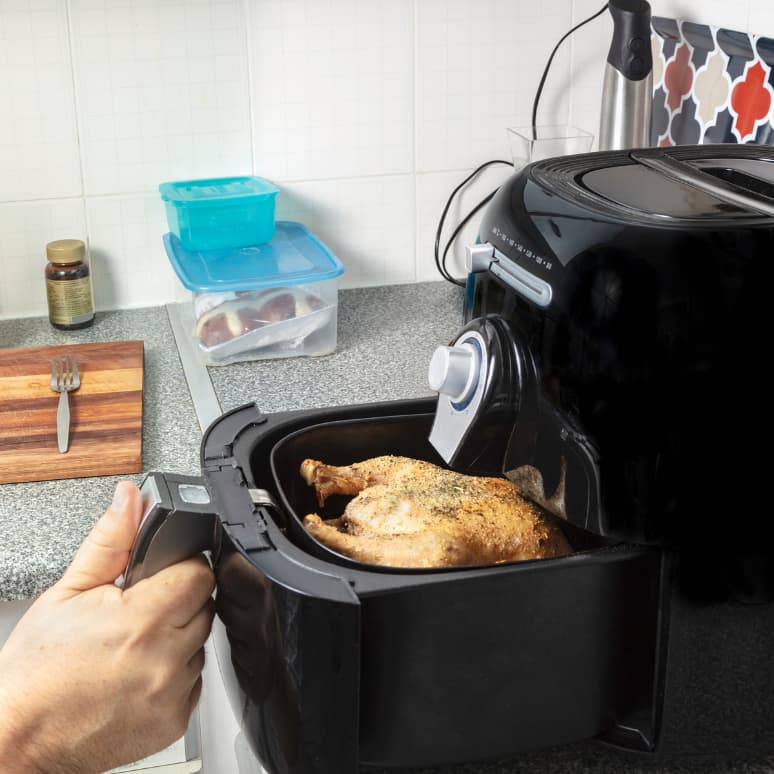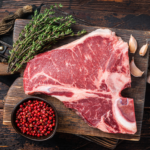Air fryers have become a staple in many kitchens for creating crispy, delicious dishes with minimal oil. But can you wrap chicken in foil in an air fryer? Let’s delve into the details.
Can I Wrap Chicken In Foil In Air Fryer?
Yes, you can wrap chicken in foil and cook it in an air fryer. Doing so can help retain moisture, enhance flavors, and ease cleanup. However, there are factors to consider before proceeding.
Pros of Wrapping Chicken in Foil

Moisture Retention
When you wrap chicken in foil before air frying, it creates a sealed environment that helps to lock in moisture. This moisture is essential for keeping the chicken juicy and tender, especially during the cooking process, which typically involves high temperatures that can easily dry out the meat. By retaining moisture, the chicken remains succulent and flavorful, enhancing the overall eating experience.
Marinade Infusion
Foil acts as a barrier between the chicken and the circulating air in the air fryer, allowing the marinade to stay in close contact with the meat. As the chicken cooks, the heat causes the marinade to release its flavors, which are then absorbed by the chicken. This results in a more intensely flavored dish, as compared to cooking the chicken without foil, where some of the marinade may evaporate or drip away.
Less Mess
One of the challenges of using an air fryer is dealing with grease and food particles that accumulate at the bottom of the fryer during cooking. However, by wrapping the chicken in foil, you create a protective barrier that prevents these drippings from coming into direct contact with the heating element or the air fryer basket. As a result, cleanup becomes much easier, requiring only the removal of the foil and a quick wipe-down of the basket.
Reduced Burning Risk
The foil acts as a shield, preventing the exterior of the chicken from being exposed directly to the hot circulating air. This reduces the risk of the outer layer of the chicken becoming overly dry or burnt before the interior is fully cooked. By providing a more even distribution of heat, the foil helps to ensure that the chicken cooks uniformly, resulting in a perfectly cooked dish without any burnt spots.
Convenient Meal Prep
If you’re preparing multiple portions of chicken or different ingredients that need to be cooked separately, wrapping each portion in foil can streamline the meal prep process. Individual foil packets can be labeled and stored in the refrigerator until ready to cook, making it easy to grab a pre-portioned meal and place it directly in the air fryer when it’s time to cook. This not only saves time but also reduces the risk of cross-contamination between ingredients.
Cons of Wrapping Chicken in Foil
Inconsistent Cooking
While foil-wrapping can help retain moisture, it may also interfere with the air circulation inside the air fryer. Air fryers rely on hot air being circulated around the food to cook it evenly and create that characteristic crispy exterior. When chicken is wrapped in foil, it can create pockets of trapped air or steam that disrupt this airflow, leading to uneven cooking. This may result in some parts of the chicken being overcooked while others remain undercooked.
Reduced Crispiness
One of the main appeals of using an air fryer is the ability to achieve a crispy texture without the need for excessive oil. However, when chicken is wrapped in foil, it creates a barrier that prevents direct contact between the hot air and the surface of the chicken. As a result, the chicken may not develop the same level of crispiness as it would if cooked without foil. While the meat may still be tender and flavorful, it may lack that desirable crunchy exterior.
Potential Interaction
Although rare, there is a possibility of interaction between certain acidic or salty ingredients and aluminum foil. This can result in a chemical reaction that causes aluminum to leach into the food. While the health implications of aluminum exposure are still under debate, some people prefer to err on the side of caution and avoid using foil with highly acidic or salty ingredients.
Environmental Concerns
Aluminum foil is not biodegradable and can contribute to environmental pollution if not disposed of properly. While the occasional use of foil may not have a significant impact, regular use can add up over time. Some environmentally-conscious consumers may choose to minimize their use of foil or explore alternative cooking methods to reduce their environmental footprint.
Tips and Tricks for Wrapping Chicken in Foil in an Air Fryer

Use Heavy-Duty Aluminum Foil
Opt for heavy-duty aluminum foil instead of regular foil to ensure that it can withstand the high temperatures generated by the air fryer. Heavy-duty foil is less likely to tear or puncture during cooking, providing better protection for the chicken.
Preheat the Air Fryer
Always preheat your air fryer to the desired temperature before adding your foil-wrapped chicken. Preheating ensures that the air fryer reaches the optimal cooking temperature, allowing for more even and consistent results.
Layer the Ingredients
If you’re incorporating marinades or vegetables along with the chicken, layer them evenly to ensure that the flavors are distributed throughout the dish. This helps to enhance the overall taste and texture of the chicken.
Securely Seal the Foil Package
Properly sealing the foil package is crucial to prevent any leaks or spills during cooking. Be sure to fold over the edges of the foil tightly to create a secure seal, trapping the juices and flavors inside.
Don’t Wrap Too Tightly
While it’s important to seal the foil package securely, avoid wrapping the chicken too tightly. Air fryers rely on circulating hot air for even cooking, so leaving some room in the foil package allows for better airflow around the food, ensuring that it cooks evenly.
Cooking Process
Vent the Foil
Consider poking a few small holes in the top of the foil package to allow some heat and air to circulate properly. This helps to prevent steam from building up inside the package, which can affect the cooking process and result in unevenly cooked chicken.
Mid-Cooking Check
Since wrapping chicken in foil may affect the cooking time, it’s a good idea to check the chicken for doneness about halfway through the estimated cooking time. Use a meat thermometer to ensure that the internal temperature of the chicken reaches at least 165°F (74°C) for safe consumption.
Use a Tray or Basket
Placing the foil-wrapped chicken in an air fryer basket or on a tray helps to catch any drips or spills during cooking, making cleanup easier. This also prevents any excess grease or juices from coming into direct contact with the heating element or the bottom of the air fryer.
Post-Cooking
Use Heat-Resistant Gear
When removing the foil-wrapped chicken from the air fryer, always use oven mitts or tongs to avoid burns. The foil and the chicken may be extremely hot immediately after cooking, so take precautions to protect yourself.
Rest the Chicken
Allow the chicken to rest for a few minutes after air frying before opening the foil package. This allows the juices to redistribute throughout the meat, resulting in a more tender and flavorful chicken.
Optional Crispiness
If you prefer a crispy texture, you can unwrap the chicken and return it to the air fryer for an additional 3-5 minutes. This allows the exterior of the chicken to crisp up while maintaining its moisture and tenderness.
FAQs
Can I wrap chicken in foil in Philips Air Fryer?
Using parchment paper or aluminum foil in a Philips Air Fryer is generally not advised as it may obstruct the circulation of hot air within the appliance, leading to suboptimal cooking results. It’s best to avoid covering the base of the basket with foil to maintain the air fryer’s cooking efficiency.
Can I wrap chicken in foil in most air fryers?
In most cases, it’s acceptable to use foil in most air fryers, but it’s important to check the guidelines in your specific model’s instruction manual. Additionally, always preheat the air fryer before placing the foil-wrapped chicken inside to ensure even cooking.
Does covering chicken with tin foil make it cook faster?
Covering chicken with tin foil can actually slow down the cooking process rather than make it faster. The foil traps moisture and heat, creating a steaming effect that may prolong the cooking time. For faster cooking, it’s generally better to leave the chicken uncovered to allow for more efficient heat transfer and browning.


